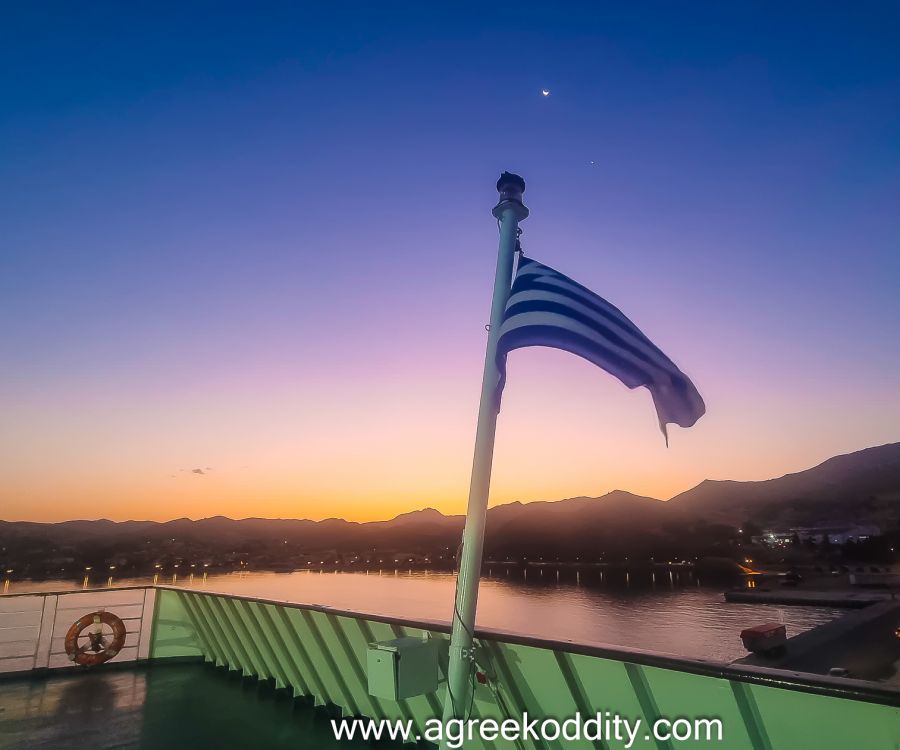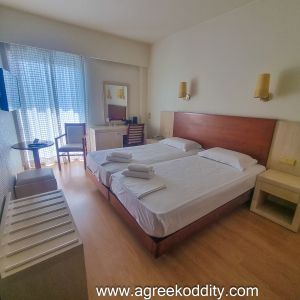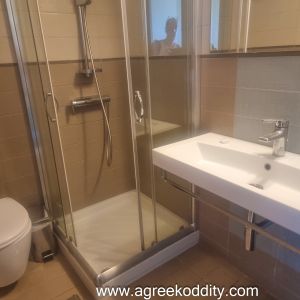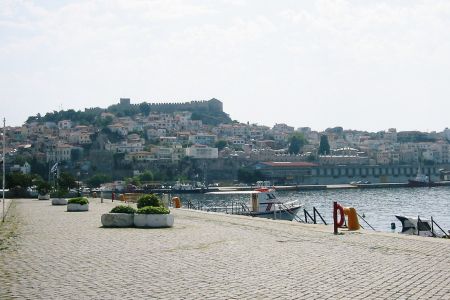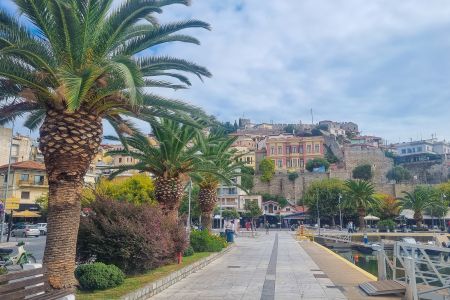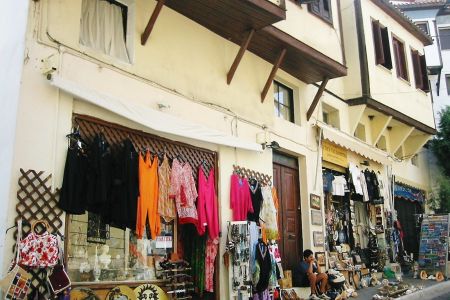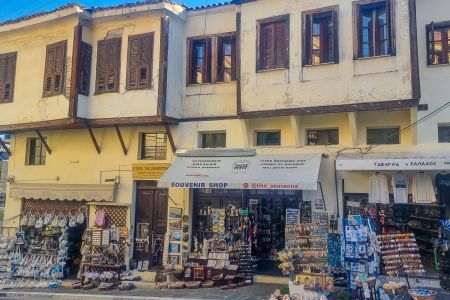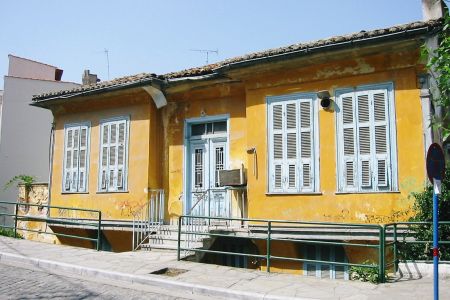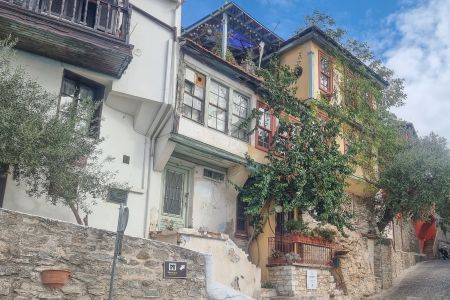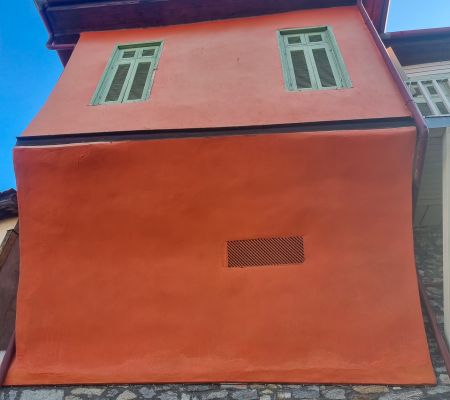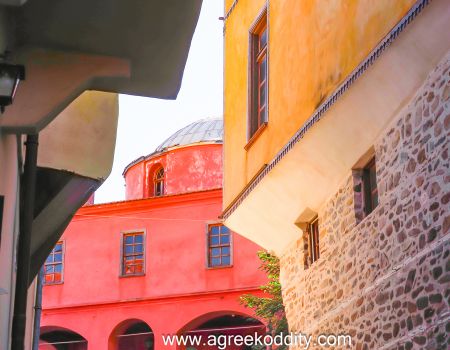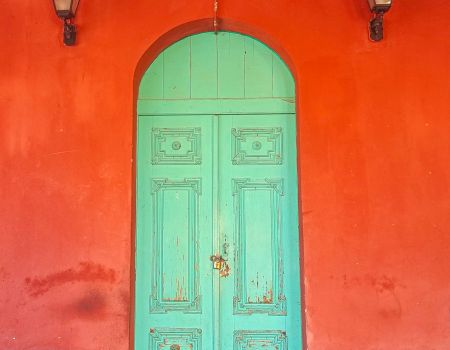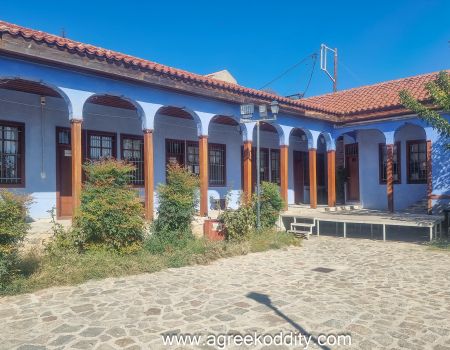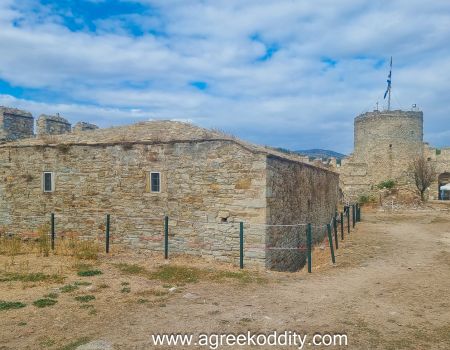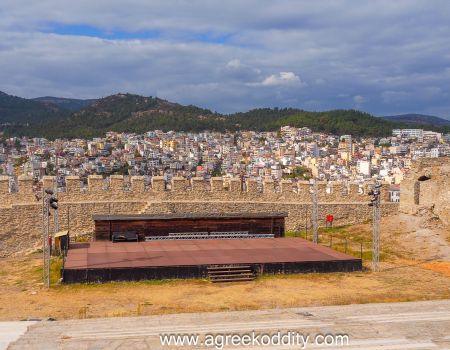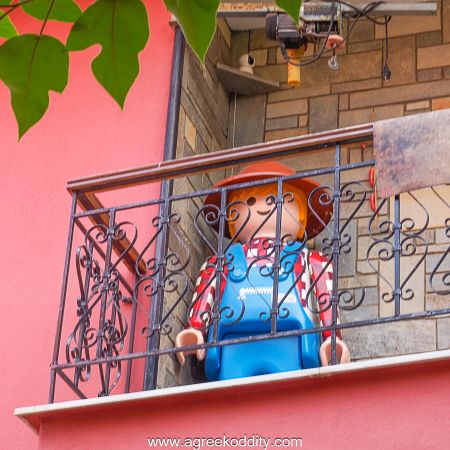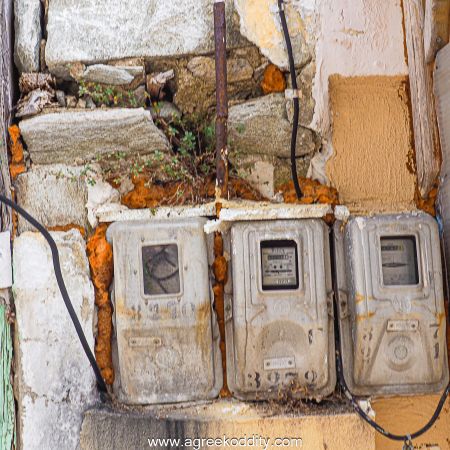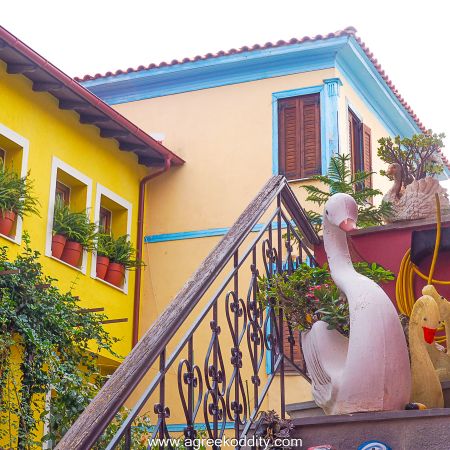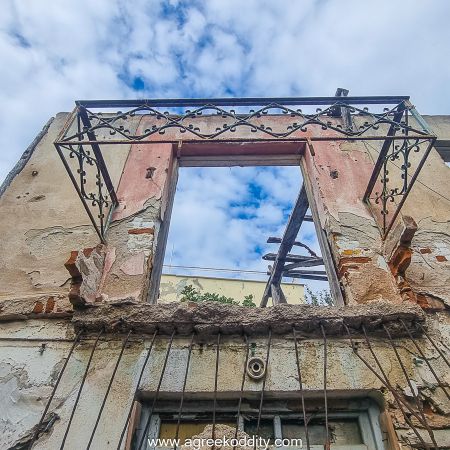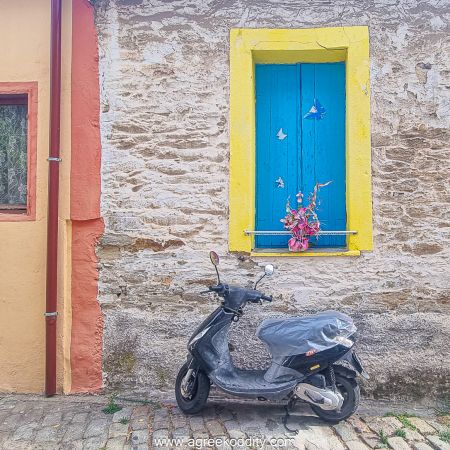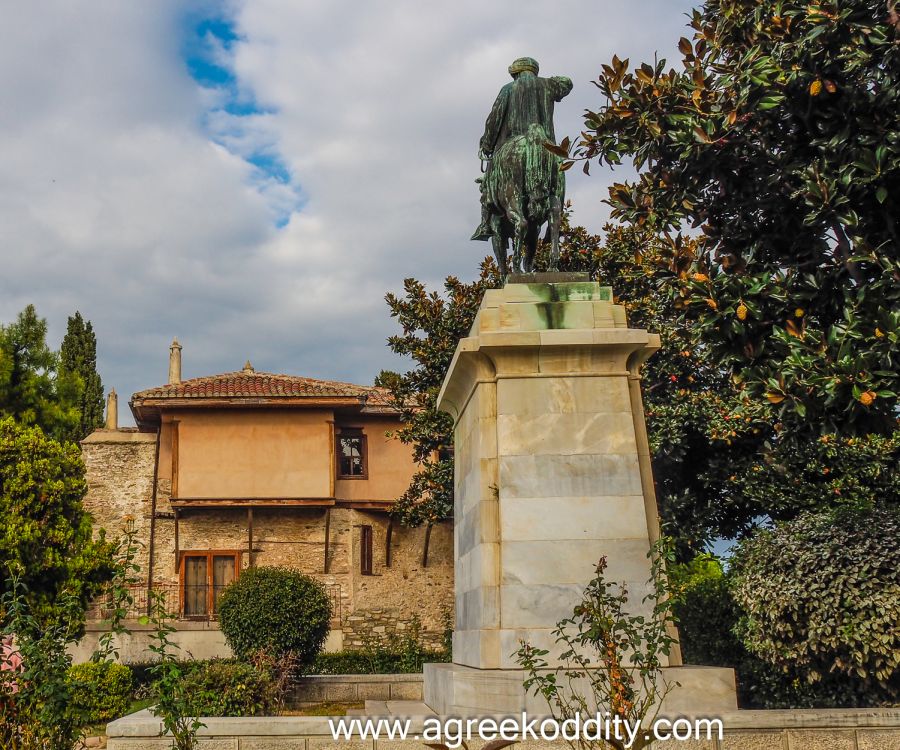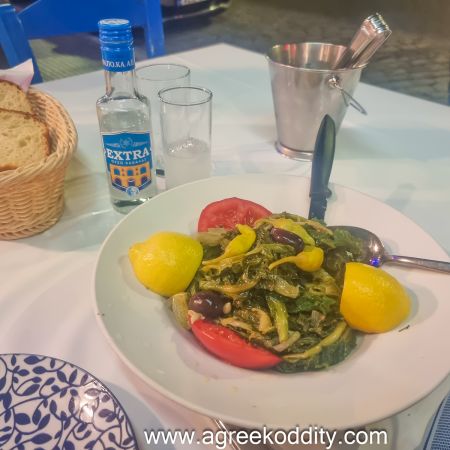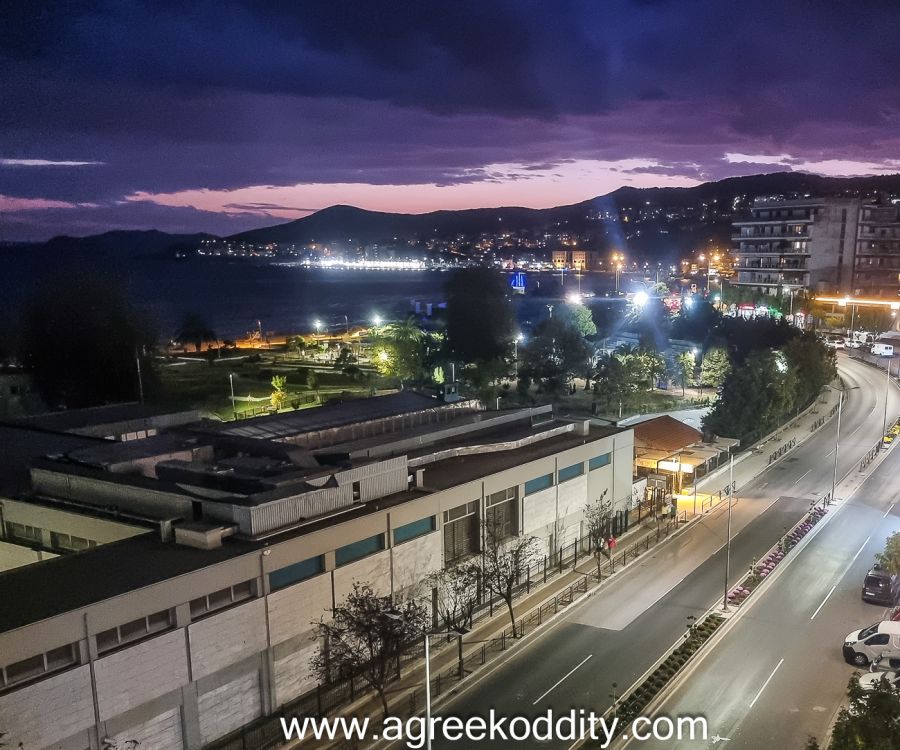Arrival in Kavala and a Stroll Down Memory Lane!
The Aqua Blue departs the shores of Agios Efstratios in the depths of the pre-dawn darkness. Several hours later she arrives at Lemnos which is already bustling with activity. The sun, although not yet visible, has begun its ascent, lighting the morning sky and tinging the underside of the lightly scattered clouds with pink and violet.
The offloading begins in earnest. Several goods lorries, the six vehicles that Aggeliki and Katerina had counted at the port including the elderly neighbour visiting Lemnos for a hospital visit. She is wheelchaired directly to a waiting ambulance, highlighting the complexities of the healthcare system of a small island.
The ship remains at Lemnos for at least an hour before departing to Kavala for the remaining part of my journey. Such was the amount of offloading and unloading at this particular port. Just another four hours to go and I reaffirm that I’d made the right choice in selecting a seat in the Business lounge. Had it been a shorter journey I would have definitely been up on the deck. The only thing missing from the lounge was a charging port for my laptop which is already beginning to exhaust itself.
The cafeteria has now opened and I treat myself to a cup of tea and a large sugared doughnut for breakfast. The sugar boost will sustain me until I arrive in Kavala.
Eventually, we pass a landmass that has to be Thassos. Google Maps, however, is telling me that I am on Mount Athos. Now wouldn’t that be a turn-up for the books! Where the GPS fails, common sense prevails! Thassos it most definitely is and soon after we are approaching the heaving metropolis of Kavala. I make my way out onto the deck to breathe in the crisp autumnal air. Hordes of seagulls follow the Aque Blue into the port, swooping and calling out above me. Hmmm, that could be the guy next to me feeding them chips! The Kastro sitting high above the port, welcomes us to the city. There couldn’t be a more stark contrast to Agios Efstratios but I’m excited for it. After all, each destination’s uniqueness keeps an itinerary such as this varied and interesting.
After exiting the large port, I thumb my hotel into Google Maps. I have a rough idea of where it’s located so head to the left. I’ve chosen Hotel Esperia because of its close proximity to the bus station. I will be using the bus service here on more than one occasion so I want to be centrally located. It takes about twenty to twenty-five minutes from disembarkation to the doorstep of the hotel and I am pleased with my choice.
I have a sea view room on the fifth floor. The balcony gives a view over to Mount Athos to the right (floating in the mist somewhere in the distance) and to Thassos straight ahead – somewhere behind the rather unattractive government building located along the main esplanade. The room is a pretty standard hotel room but it is modern, light, bright and clean. I also have breakfast included which is always a budget traveller’s treat! I’ve booked initially for three nights but with the possibility to extend further if I wish.
I’m itching to get out and explore. I was last in Kavala in 2005 and it was a very fleeting visit. This is yet another trip that I haven’t yet got around to writing up. Anyway – on with the here and now.
Anyone who has followed my travels will know that if a town has a castle, that will be my first port of call. You get a good sense of a place by exploring a town’s Kastro just as you do walking in the landscape of the villages. In addition to this, a Kastro usually has a good vantage point and enables you to see the lie of the land.
After leaving the hotel I walk along the wide mouth of the harbour. Large fishing boats are moored up all along the quayside where it seems that fishing is done on an industrial scale. A mountain of polystyrene boxes filled with the daily catch, line the harbour waiting to be shipped to other destinations. Amongst the huge trawlers are small fishing caiques that sell their fish directly to the public.
At the end of the harbour, the Aqua Blue is still in the port. She remains here for several hours, offloading and unloading before heading back on route to Lavrio. This ferry route is definitely worth bearing in mind if you want to travel by boat from Athens to the Northern Aegean islands – a long journey but an alternative option to internal flights to Lemnos, Chios and of course Agios Efstratios.
Close to the Church of St Nicholas on the main road, a cobbled street on the right begins to climb steeply up towards the Kastro. The fortress of Kavala, unsurprisingly sits on a rocky promentory overlooking the harbour and the atmospheric old town known as Panagia. I pass several traditional tavernas and tourist shops that all feel very familiar. Later, I looked at my photographs from 2005 and I’d obviously retraced my steps from 18 years previously. It was interesting to see how the harbourfront has been developed but almost everything else has stayed the same. My photographs from 2005 were taken on a Canon Ixus v – the first digital camera that I’d ever owned and weighed in at a massive 2.1 megapixels!
Once in the heart of Panagia, my senses are bombarded with a fusion of colour, texture and incredible architecture. I’m an absolute sucker for a Sahnisi, the projecting window or balcony found in architecture in the Balkans and North Western Greece. The Sahnisi can also be found in other regions of Greece that were once under Ottoman occupation – Rhodes and Crete for example. Cairo (where I got married) is known for the very elaborate versions that are known in Egypt as Mashrabiya. Nowadays, the word Mashrabiya refers to the ornate wooden screen rather than the structure itself, though my husband knows it as Arabesque.
The purpose of these screened balconies was twofold. Firstly as a cooling system. Water in clay jars would be placed behind the screen and as the breeze filtered through the latticework, the water vapours would cool the room. Secondly, the decorative wooden screens would allow the female residents to view the outside world whilst they themselves were kept modestly hidden from view. There is something so aesthetically pleasing about these architectural features and along with my obsession with doors, windows, balconies, chimney pots and a whole host of other architectural accoutrements, I do wonder if I’ve missed my calling somewhere along the line.
On the way to the fortress you will most definitely walk past the Halil Bey Mosque which unfortunately is closed. There is certainly enough to view from the outside to make it worthwhile though. The information board outside the mosque tells me that during the restoration of the mosque, they discovered the remains of a three-aisled basilica dating back to the end of the early Christian period. At this time Kavala was known as Neapolis – New Town. The church was found to have been restored several times and even added to during late Byzantine times. It was after the final conquest of the Ottomans that the site was attributed to the worship of Islam.
The mosque itself was rebuilt and added to over the years. All that remains of the mosque from the early Ottoman period is the lower part of the minaret. A later minaret was in place until the 1950’s. The newer complex built in the 20th century provided shelter for the refugees from the 1922 population exchange which I will be writing more about in future posts.
Once in the heart of Panagia, I lose sight of the Kastro which means that I am close. As I continued to follow the road in an upward direction it eventually comes into view above the tiled rooftops of the village houses.
At the Kastro entrance, I pay a couple of euros entry fee and set about exploring. The Kastro sight is quite small and I can see from the stage that has been set up that it is used for cultural events. Some parts of the Kastro are closed to the public due to construction work but the small cafe offers a nice place to rest your weary feet for a while.
To be honest, I was left a little unimpressed by this fortification. I’d been spoilt by Myrina Kastro on Lemnos which was a hard act to follow. It was worth the visit though and I daresay a fantastic location for a cultural event.
After leaving the Kastro I did a little bit of what I love doing best – just generally wandering around the alleyways with no particular plan. I threw away the guidebooks years ago.
It’s the little random finds that usually take my interest. The things that most people wouldn’t give a second glance. To me, they are things of beauty and interest. Even a cluster of electricity meters have a certain character (yes I have a photo collection of these too). A poem stapled to a door of a derelict building, plastic swans, or a vase on a windowsill, at some point they have been part of a person’s thought process or an intention. They are inanimate and yet by proxy, they have a soul bequeathed to them by the person who owned the thought process or intention.
BTW the poem on the door is called Invoking Calliope. The interesting thing about it is that it appears to have been typed on a typewriter and not printed from a computer. It’s in several languages but I can’t find any reference to an author or its origin. In a way, this makes it even more intriguing!
I eventually find myself on the street heading towards the tip of the promontory. On my right, I have a view directly over the port. The Aqua Blue is still here though the loading and unloading is a little less frenetic from when I left her. Maybe Kavala is where the crew take a rest break. That would make sense. She arrived on Agios Efstratios shortly after 05.30 and had been on the seas before well before that. This also reminds me how long I’ve been awake and why I’m beginning to feel pretty exhausted. Does anyone else form emotional attachments to the ships they sail on? I certainly do. Spotting a familiar ship arriving at any port is always exciting.
Continuing along the cobbled street I spot the familiar sight of the impressive statue of Mohamed Ali. Sitting adjacent to it is the even more spectacular house of Mohamed Ali, an incredible example of 18th-century Ottoman architecture. Unfortunately, the house is closed so I will put it onto an itinerary for another day.
Right now hunger and exhaustion is getting the better of me. Walking back towards the harbour, I find a nice little taverna at the corner called Perdikis. This traditional taverna serves a good selection of traditional fare and the service is welcoming and friendly.
Back at Hotel Esperia, the view from the balcony comes into its own. Now to hatch a plan for tomorrow – so much to see and so little time!

